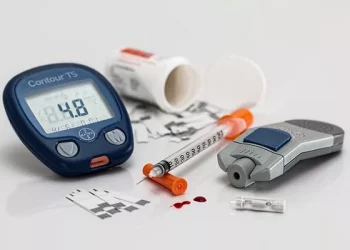Diagnostic Criteria and Screening Recommendations
Revised Diagnostic Criteria: The new guidelines may have updated diagnostic criteria. For example, in addition to the traditional fasting plasma glucose and oral glucose tolerance test, the use of hemoglobin A1c (HbA1c) has become more prominent. An HbA1c level above a certain threshold, such as 6.5%, may now be used as a diagnostic indicator. This is because HbA1c reflects the average blood glucose level over the past two to three months and provides a more comprehensive picture of glycemic control compared to a single blood glucose measurement. It helps in identifying patients who may have been missed by relying solely on fasting or postprandial glucose tests.
Screening Recommendations: Screening for type 2 diabetes has also been refined. It is now recommended that individuals at high risk, such as those with a family history of diabetes, obesity, sedentary lifestyle, or a history of gestational diabetes, be screened at an earlier age and more frequently. For instance, screening may start as early as age 35 for those with one or more risk factors, and if normal, be repeated every three years. This proactive approach allows for early detection and intervention, which can significantly improve the long-term prognosis of the disease.
Lifestyle Modifications: Enhanced Emphasis
Dietary Guidelines: The new guidelines place even greater emphasis on a healthy diet. A diet rich in whole grains, fruits, vegetables, and lean proteins is highly recommended. The intake of saturated and trans fats should be minimized as they can contribute to insulin resistance and cardiovascular problems. For example, replacing red meat with fish or plant-based proteins like beans and lentils can have a positive impact on glycemic control and lipid profiles. Portion control is also crucial, and the use of tools like food diaries or mobile applications can help patients monitor their calorie and nutrient intake more effectively.
Physical Activity Recommendations: Regular physical activity remains a cornerstone of type 2 diabetes management. The new guidelines suggest at least 150 minutes of moderate-intensity aerobic exercise per week, such as brisk walking, cycling, or swimming. In addition, incorporating strength training exercises at least two days a week is beneficial. Strength training helps in increasing muscle mass, and since muscle tissue is more sensitive to insulin than fat tissue, it can improve insulin sensitivity. Simple activities like taking the stairs instead of the elevator or doing household chores more actively can also contribute to the overall physical activity goal.
Weight Management Strategies: Achieving and maintaining a healthy weight is vital. For overweight and obese patients, a weight loss goal of 5 – 10% of body weight is often recommended as a starting point. This can be achieved through a combination of dietary changes and increased physical activity. The guidelines may also provide more specific strategies for weight loss, such as the use of meal replacement shakes in a structured weight loss program or the inclusion of a registered dietitian in the patient’s care team to provide personalized dietary advice and support.
Pharmacological Treatment: Updated Approaches
First Line Pharmacotherapy: The choice of first line pharmacological treatment has seen some changes. Metformin is still widely regarded as a first line option due to its effectiveness in reducing hepatic glucose production and improving insulin sensitivity. However, new guidelines may consider other agents in certain situations. For example, in patients with a high risk of cardiovascular disease, a sodium-glucose cotransporter 2 (SGLT2) inhibitor or a glucagon-like peptide-1 (GLP-1) receptor agonist may be considered as an alternative or in combination with metformin. This is because these agents have shown potential cardiovascular benefits in addition to their glucose-lowering effects.
Combination Therapy: The guidelines now encourage a more personalized approach to combination therapy. Depending on the patient’s glycemic level, comorbidities, and individual response to medications, different combinations of drugs may be used. For instance, a combination of metformin and a sulfonylurea may be effective in some patients to achieve better glycemic control. However, in patients with a history of hypoglycemia or weight gain concerns, a combination of metformin and a DPP-4 inhibitor might be a more suitable option. The goal is to balance glycemic control with minimizing side effects and addressing the patient’s specific health needs.
Use of Newer Agents: The introduction of newer antidiabetic agents has led to updated guidelines. SGLT2 inhibitors, as mentioned earlier, not only lower blood glucose by increasing urinary glucose excretion but also have beneficial effects on blood pressure and cardiovascular and renal outcomes. GLP-1 receptor agonists, which mimic the action of the incretin hormone, can improve glycemic control, promote weight loss, and have potential cardiovascular benefits. The guidelines provide more detailed instructions on when and how to use these newer agents, including considerations for patient selection, dosing, and monitoring for side effects such as urinary tract infections with SGLT2 inhibitors and gastrointestinal symptoms with GLP-1 receptor agonists.
Glycemic Targets: Individualized Goals
HbA1c Targets: The new guidelines advocate for more individualized HbA1c targets. Instead of a one-size-fits-all approach, the target HbA1c level is determined based on factors such as the patient’s age, life expectancy, presence of comorbidities, and the risk of hypoglycemia. For example, in younger patients with a longer life expectancy and no significant comorbidities, a more stringent HbA1c target, such as below 6.5% or 7%, may be appropriate to reduce the long-term risk of diabetes complications. However, in older patients with multiple comorbidities and a higher risk of hypoglycemia, a more relaxed target, such as 7.5% – 8%, may be considered to balance the benefits of glycemic control with the potential harm of hypoglycemic episodes.
Postprandial Glucose Targets: Attention is also given to postprandial glucose targets. Controlling postprandial glucose spikes is important as they can contribute to overall glycemic variability and increase the risk of cardiovascular disease. The guidelines may recommend specific postprandial glucose levels to aim for, such as less than 180 mg/dL one to two hours after a meal. This can be achieved through a combination of dietary modifications, appropriate choice of medications, and lifestyle changes. For example, the use of rapid-acting insulin analogs or GLP-1 receptor agonists can help in better controlling postprandial glucose levels.
Monitoring and Follow-Up: Comprehensive Strategies
Frequency of Monitoring: The new guidelines provide more specific recommendations on the frequency of monitoring. In addition to regular HbA1c testing, which may be done every three to six months depending on the patient’s glycemic stability, more frequent self-monitoring of blood glucose (SMBG) is encouraged in certain situations. For example, patients on insulin therapy or those with unstable glycemic control may need to monitor their blood glucose levels multiple times a day, including before and after meals and at bedtime. This helps in adjusting medications, diet, and exercise regimens promptly.
Use of Continuous Glucose Monitoring (CGM): Continuous glucose monitoring is becoming more widely used and recommended in the new guidelines. CGM provides real-time information about blood glucose levels throughout the day and night, allowing patients and healthcare providers to identify patterns of glycemic control, such as overnight hypoglycemia or postprandial hyperglycemia that may not be detected by SMBG alone. It can be particularly useful in patients with hypoglycemia unawareness or those who have difficulty achieving glycemic targets. The guidelines may provide criteria for when to initiate CGM and how to interpret and act on the data obtained.
Follow-Up with Healthcare Team: Regular follow-up with a multidisciplinary healthcare team is emphasized. This team may include a diabetologist, a primary care physician, a registered dietitian, a diabetes educator, and a nurse. The frequency of follow-up visits depends on the patient’s individual needs but may range from every three months to annually. During these visits, the patient’s glycemic control, medication adherence, lifestyle changes, and any potential complications are assessed. The healthcare team provides education, support, and makes necessary adjustments to the treatment plan to ensure optimal diabetes management.
Management of Complications: Proactive Prevention and Treatment
Cardiovascular Disease Prevention: Given the high prevalence of cardiovascular disease in patients with type 2 diabetes, the new guidelines focus on proactive prevention. This includes not only glycemic control but also management of other cardiovascular risk factors such as blood pressure and lipid levels. For example, the use of statins to control LDL cholesterol and antihypertensive medications to maintain blood pressure within a target range is recommended. In addition, the use of antidiabetic agents with proven cardiovascular benefits, such as SGLT2 inhibitors and GLP-1 receptor agonists, is emphasized in patients with established cardiovascular disease or at high risk of developing it.
Renal Protection: Diabetic nephropathy is a common complication. The guidelines now recommend early screening for kidney disease using measures such as urine albumin-to-creatinine ratio and estimated glomerular filtration rate. In patients with evidence of kidney disease, the use of agents that have renal protective effects, such as SGLT2 inhibitors, is preferred. These agents can slow down the progression of kidney disease and reduce the risk of end-stage renal disease. Additionally, proper management of blood pressure, especially with medications like angiotensin-converting enzyme inhibitors or angiotensin receptor blockers, is crucial for renal protection.
Neuropathy and Retinopathy Management: Screening for diabetic neuropathy and retinopathy is also an important part of the new guidelines. Regular foot examinations to detect neuropathy and prevent foot ulcers are recommended. For retinopathy, annual eye examinations by an ophthalmologist are advised. In cases of established neuropathy or retinopathy, appropriate treatment measures such as pain management for neuropathy and laser therapy or intravitreal injections for retinopathy are implemented according to the severity of the condition.
Conclusion
Related topics



























